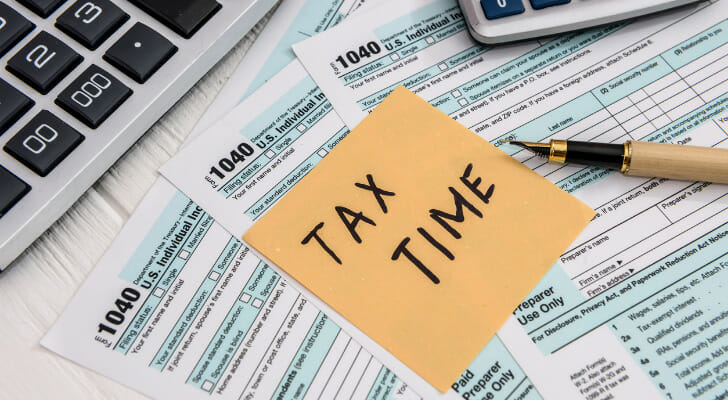For many self-employed individuals, freelancers and small business owners, understanding how to pay quarterly taxes is an essential part of managing finances. Unlike traditional employees who have taxes withheld from their paychecks, those who are self-employed must take a proactive approach to ensure they meet their tax obligations. The IRS requires these individuals to estimate and pay taxes on income that isn’t subject to withholding, typically every quarter. This process can seem daunting at first, but with a clear understanding of the steps involved, it becomes a manageable task. Paying quarterly taxes involves calculating your expected annual income, determining the appropriate tax rate, and making timely payments to avoid penalties.
If you need more tax help, consider working with a financial advisor who has that type of expertise.
What Are Quarterly Taxes?
Quarterly taxes, also referred to as estimated taxes, are a type of taxation you must pay in advance of the annual tax return. They work on a pay-as-you-go basis, meaning you pay them throughout the year. During each quarter, applicable taxpayers pay a portion of their expected annual income tax. As a result, these payments are estimations.
These regular tax payments are meant to cover Medicare, Social Security and your income tax. So, you should familiarize yourself with how those taxes break down: the income tax and the self-employment tax. Income tax follows the same income tax rates as salaried workers pay. Then, the self-employment tax clocks in at 15.3%. This covers both the Social Security and Medicare costs (12.4% for Social Security and 2.9% for Medicare).
Why the Government Requires Quarterly Estimated Tax Payments
Before outlining how to pay quarterly taxes, you must first understand who owes quarterly taxes and why the IRS requires them. The U.S. tax system uses a pay-as-you-go income tax system. With this type of system, taxpayers pay taxes as they earn income.
Therefore, the government can tax W-2 employees with withholdings and self-employed individuals with quarterly tax payments. If you work for yourself as an independent contractor or freelancer, your taxes typically are not automatically taken from your paychecks. Therefore, the IRS collects income taxes with quarterly tax payments.
To determine if a taxpayer must make quarterly tax payments, they follow several guidelines.
- You anticipate owing more than $1,000 (after tax credits) when filing your return.
- You anticipate the withholding and tax credits will be less than 90% of your estimated tax liability for 2025 or 100% of your 2024 year tax liability (assuming it covers all 12 months of the year).
If your adjusted gross income (AGI) exceeds $150,000 ($75,000 if you’re married and file separately) the requirement is 110%. Farmers and fishermen are an exception to this requirement. If you’re in either of these professions and earn at least 66.6% of your income from the trades, you only need to pay a corresponding amount of the tax liability.
While paying your quarterly tax estimates seems like a pain, it can help you avoid a big tax bill during tax time. In addition, paying quarterly taxes makes your tax payment more manageable throughout the year.
How Do I Know If I Owe Quarterly Taxes?
If you are currently a small business owner or self-employed, you likely owe quarterly taxes. Self-employed workers usually include:
- Independent contractors
- Sole proprietors
- Members in a partnership that conducts business, like an LLC
- Part-time or full-time business owners
Just as there are employment-related rules for quarterly taxes, there are also financial rules. The IRS only requires you to make estimated payments if you owe $1,000 or more when you file your return. This minimum for estimated taxes drops to $500 for corporations, generally. However, the IRS does require the self-employment tax as well if your net earnings exceed $400.
You may not need to pay quarterly, though, if you already pay a sufficient amount during the year. For instance, people who have a W-2 job on top of their 1099 income may pay enough in taxes through their W-2 full-time job.
How to Pay Quarterly Taxes

So, if you discover you’re required to pay quarterly taxes, you must first use Schedule C of Form 1040 to determine how much you owe. However, if your net earnings equate to less than $5,000, you may be able to file a Schedule C-EZ instead. Both forms will help you determine your net earnings or loss.
Then, you will use this number on your Form 1040 to calculate the total amount of self-employment tax you must pay during the year. If you file a joint return, you and the other self-employed person must calculate income separately. Therefore, it’s wise to consult with a tax professional who can help you ensure you’re calculating the right amounts and abiding by IRS guidelines.
Filing quarterly taxes requires that you use Form 1040-ES, Estimated Tax for Individuals. Your annual tax return from the previous year is necessary to complete this form. Once filled out, the form’s worksheet will indicate whether you must file quarterly estimated tax.
To make quarterly payments you can:
- Submit the payment electronically with the Electronic Federal Tax Payment System
- Mail-in vouchers that are on the Form 1040 SE
To avoid penalties, you must make your first payment by the quarterly tax deadline of April 15, 2024. Suppose you have made an overpayment of tax after completing Form 1040 or 1040-SR. The IRS may refund you the difference or designate whatever portion you like of the overpayment toward your estimated tax for the current year. This decision can be easier to make if you have a good idea of your tax payments for the current tax year; an overpayment could simply be credited toward your estimated taxes, reducing the burden later in the tax year.
When Are Quarterly Taxes Due for 2025?
As mentioned above, estimated taxes are paid during four payment periods over the year. To avoid underpayment, you need to make sure you don’t miss the following dates for the 2025 tax year:
- 1st Quarter (Jan. 1 – March 31) Deadline: April 15, 2025
- 2nd Quarter (April 1 – May 31) Deadline: June 15, 2025
- 3rd Quarter (June 1 – Aug. 31) Deadline: Sept. 15, 2025
- 4th Quarter (Sept. 1 – Dec. 31) Deadline: Jan. 15, 2026
What Taxes Must Self-Employed Individuals Pay?
Like other taxpayers, self-employed individuals will file an annual return. However, they will usually make tax payments every quarter. Tax payments usually fall into two buckets: self-employment tax (Social Security and Medicare) and income tax on profits from the business.
For 2025, the self-employment tax rate on net income up to $176,100 is 15.3%. This percentage is broken down into 12.4% for Social Security tax and 2.9% for Medicare tax. Also, if your net earnings exceed $250,000 and you’re married and filing jointly, $125,000 if you’re married but filing separately or $200,000 for all other taxpayers, you must pay an extra 0.9% Medicare tax.
Keep in mind, usually only 92.35% of your net earnings are subject to self-employment tax.
What Are Qualified Business Income Deductions?

You must pay a self-employment tax on your net earnings. This means that you can subtract qualified business income (QBU) deductions from the mix to lower the amount you’re taxed. The IRS allows self-employed individuals and small business owners to deduct up to 20% on their pass-through income.
For example, you can deduct 50% of your self-employment tax from your income taxes. This means that if your Schedule SE states you owe $4,000 of self-employment tax, you can deduct $2,000 on your Form 1040.
Bottom Line
Unlike traditional employees who have taxes withheld from their paychecks, those who are self-employed must estimate and pay their taxes in four installments throughout the year. This process can seem daunting at first, but with a little guidance, it becomes a manageable task. Paying quarterly taxes involves calculating your expected annual income, determining your tax liability and making timely payments to the IRS. It’s crucial to stay organized and keep accurate records of your income and expenses to ensure you pay the correct amount. Missing a payment or underpaying can lead to penalties, so it’s important to understand the deadlines and requirements.
Tax Tips
- A financial advisor can help you pinpoint a tax strategy that helps you minimize your tax bill, now and into the future. Finding a financial advisor doesn’t have to be hard. SmartAsset’s free tool matches you with vetted financial advisors who serve your area, and you can have a free introductory call with your advisor matches to decide which one you feel is right for you. If you’re ready to find an advisor who can help you achieve your financial goals, get started now.
- Quarterly taxes require you to make estimates based on your total expected income. SmartAsset’s income tax calculator can help you with your estimates and figure out your potential tax bill.
- A financial advisor who specializes in tax planning can help reduce your 1099 income taxes by harvesting your losses. This means that you will be able to use your investment losses to reduce taxes on 1099 income.
Photo credit: ©iStock.com/Pra-chid, ©iStock.com/pcess609, ©iStock.com/alfexe
